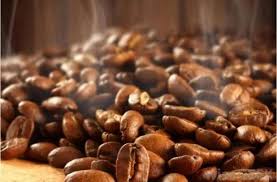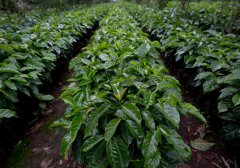Professional coffee roasting | Evolution of carbon dioxide and moisture during bean roasting

Professional barista communication, please pay attention to coffee workshop (Weixin Official Accounts cafe_style)
I accidentally read a paper written by R. Mr Geiger's paper examines in detail the moisture and carbon dioxide produced during coffee roasting, and some of its conclusions are a shock. Although the lab heating rhythm is far from our usual practice, understanding these concepts should play a role in understanding future baking, and the key points are summarized here.
First of all, I will explain some nouns and test conditions:
HTST (High temperature short time)
LTLT (Low temperature long time)
The L* value of the two baking methods was consistent, both were 22~23
HTST: 260 degrees hot wind, 170 seconds, wind speed 3.007 m/s
LTLT: 228 ° C hot wind, 720 seconds, wind speed 2.037 m/s
The bean temperature mentioned here is the bean core temperature measured by drilling
The moisture content of raw beans is 8.3%.
Raw beans for measuring chemical reaction water, pre-baked to moisture content of 1.1%
The moisture content of coffee is obtained by dry weighing

It's customary to calculate the weight loss rate of baked beans, but this table not only describes the proportional components, but also unexpected information.
Baking evaporates more moisture than it would otherwise.
The excess water represents chemical reaction water.
Baking emits a low percentage of carbon dioxide.
It emits more carbon dioxide when stored
Although HTST evaporates less water via baking than LTLT, it is estimated that the cooling process evaporates 1.6 g of water, so that the final weight loss of the two is still very close (15.38 g vs. 15.86 g).
These estimates are derived by linearly extending the cumulative evaporation rate of CO2/H2O for 20 seconds.
The difference in weight loss data between the two methods (On-line/calculated vs. Gravimetric) may be due to the inability of the first method to measure e.g. tipping and volatile gases other than CO2/H2O. In addition, measurement errors of gas flow rate, volatile concentration and so on are also one of the reasons.

Relationship between temperature, moisture content, baking weight loss and time of beans
HTST, two curves and time are almost linear
LTLT, two curves and time are approximately exponential
The overall change of coffee beans is mainly determined by the roasting temperature
HTST at 100 seconds, the temperature of beans about 220 ℃, weight loss> 8%, moisture content
Important Notice :
前街咖啡 FrontStreet Coffee has moved to new addredd:
FrontStreet Coffee Address: 315,Donghua East Road,GuangZhou
Tel:020 38364473
- Prev

Roast your own quality coffee beans. Master roasters teach you the secret of roasting.
Professional barista communication Please pay attention to coffee workshop (Weixin Official Accounts cafe_style) People who like desserts always want to make their own cakes. Similarly, people who like coffee will not be satisfied with buying ready-made coffee beans. Sometimes, so-called premium coffee in coffee shops has a bitter taste, or is infused with defective beans, which is very addictive. Sometimes you meet a great bean, but you're afraid to save it.
- Next

Blending coffee beans Blending before roasting (raw blending), roasting before blending (cooked blending)
Professional barista communication please pay attention to coffee workshop (Weixin Official Accounts cafe_style) ESPRESSO formula The ideal Italian espresso acidity is very low, high body, and has a rich, velvety, thick reddish brown Crema containing coffee aroma and flavor. Crema is the only important indicator of complete Espresso, it basically has to master coffee strength
Related
- Beginners will see the "Coffee pull flower" guide!
- What is the difference between ice blog purified milk and ordinary milk coffee?
- Why is the Philippines the largest producer of crops in Liberia?
- For coffee extraction, should the fine powder be retained?
- How does extracted espresso fill pressed powder? How much strength does it take to press the powder?
- How to make jasmine cold extract coffee? Is the jasmine + latte good?
- Will this little toy really make the coffee taste better? How does Lily Drip affect coffee extraction?
- Will the action of slapping the filter cup also affect coffee extraction?
- What's the difference between powder-to-water ratio and powder-to-liquid ratio?
- What is the Ethiopian local species? What does it have to do with Heirloom native species?

